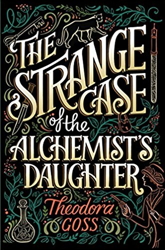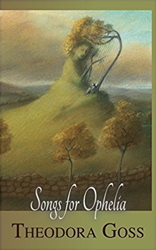
I’d like to be sleeping in this morning, having only just returned from most of a week in Toronto, but the DayJob beckoned and there were all those lost hours to make up for. It’s times like these that I’m reminded what a fine thing it is to be able to schedule EATING AUTHORS posts in advance. Technology, I love it!
This week’s guest, Theodora Goss, knows all about traveling. Born in Hungary, she grew up in an assortment of European countries before her family came to the US. She has a J.D. from Harvard Law and more recently picked up a Ph.D in English.
I first met Dora by accident, some years back at a convention when I wandered into the room where she was giving a reading. It was incredible and I’ve been following her compelling short fiction and incredible poetry ever since. She’s been nominated for major awards including the Nebula, Locus, and Seiun, and won the World Fantasy award for Best Short Fiction and the Rhysling Award for Best Long Poem.
Earlier this year Saga Press published her first novel, The Strange Case of the Alchemist’s Daughter. More, please.

LMS: Welcome, Dora. Please, tell me about your most memorable meal.
TG: When I was a child, one of my favorite foods was Hortobágyi húsos palacsinta. (Try saying that fast — or at all, if you’re not Hungarian! Remember to roll your r’s.) Palacsinta is the Hungarian version of a crêpe, but a little thicker. You can roll it up around all sorts of things, like apricot jam or a mixture of sugar and cocoa. But you can also use it for savory dishes. Húsos means with meat, and Hortobágyi may refer to Hortobágy, either a village or a steppe near the Alföld, the Great Plain of Hungary where herds of cattle still roam.
Basically, you cook shredded meat (my mother usually used chicken) with onions and garlic in a paprika sauce. Then, you wrap it up in the palacsinta: meat-filled pancakes, we called them. Then you pour more paprika sauce on top, heat through, and serve with sour cream. My mother usually assembled it for special occasions, like parties for colleagues, where we children would have to carry around hors d’oeuvres and make small talk. I never got enough.
That’s one of my favorite foods. But my favorite meal took place in a restaurant called the ÉpÃtész Pince, which is located in the basement of the Chamber of Hungarian Architects. You can also sit out in the courtyard near the Art Nouveau entrance, surrounded by ivy-covered walls, neoclassical statues, and people speaking all sorts of different of languages while eating their lunch or dinner. That’s what I was doing.
It was my first time back in Hungary by myself, after the fall of the Berlin wall, staying in what had once been my grandparents’ apartment — now it belonged to my mother. It had not been updated since the 1960s, and still had the old gas stove you lit with a match. I was a little scared to use it, and anyway it was my first day in Budapest, so I had no food in the refrigerator. The apartment was across the street from the Magyar Nemzeti Muzeum, the Hungarian National Museum, and right around the corner was the ÉpÃtész Pince. Guess what was on the menu? That’s right — Hortobágyi húsos palacsinta. It was listed as an appetizer. (Unless you are really, really hungry, don’t try to have it as an appetizer. You will be full afterward.) For once, I actually got as much húsos palacsinta as I wanted!
There I was, sitting in that courtyard back in Budapest, eating a food I remembered so well from my childhood. I was so far away from my adult life in the United States, and yet I felt as though I had come home. That is the power food has, I think. Taste and smell can remind us of the past and bring us back to selves we thought we had left behind. I’ve been back to Budapest many times since then, and I usually try to eat at least one lunch or dinner in that courtyard. Yes, the restaurant still serves Hortobágyi húsos palacsinta, and it’s still listed as (but isn’t really) an appetizer.

Thanks, Dora. Two of my favorite things are memory and food, and nothing brings them together so hauntingly and breathlessly as those things we ate as children.
Next Monday: Another author and another meal!
Want to never miss an installment of EATING AUTHORS?
Click this link and sign up for a weekly email to bring you here as soon as they post.
#SFWApro
Tags: Eating Authors


